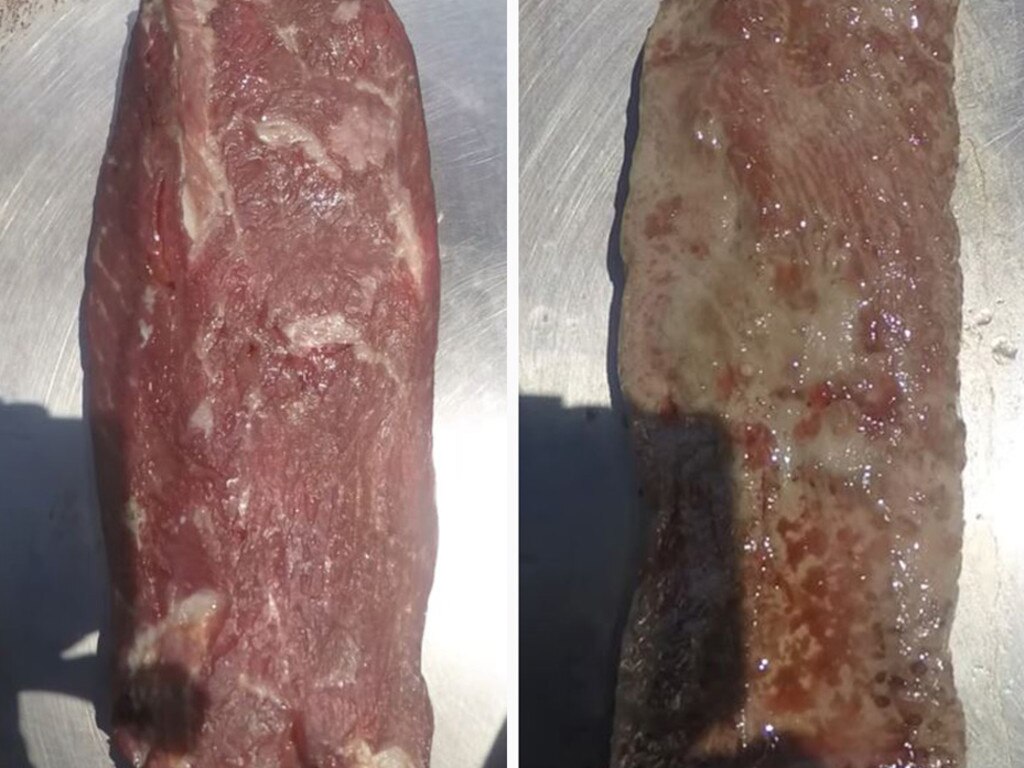This is exactly what happens to a baby when left in a hot car
Around 5000 Aussie kids are left in cars every year – but it is one of the “most dangerous, life-threatening things” a parent can do. Here’s why.
Every summer we hear horror stories of babies dying after being left in a hot car.
Globally, more than 1000 children have died in sweltering vehicles since records began in 1998, all of which could have been prevented.
While most of these tragic deaths occur in the US where the toll stands at 906 according to noheatstroke.org, Australia is also affected due to our hot climate.
Over the past five years, 10 children are reported to have died after being left in hot cars, with half of those deaths taking place in Queensland, according to Kidsafe Australia.
And alarmingly, every year more than 5000 Aussie children are rescued after being left unattended in a car.
Experiments have shown that even on a relatively mild day, temperatures inside a closed car can quickly rise to over 52C, Omni Calculator states.
These sweltering temperatures can cause heatstroke which particularly in young children can prove deadly, Dr Sam Saling told news.com.au.

“Parents can get frazzled when running around doing school pick-ups, carpooling to extra-curricular activities and completing errands, and leaving a child in the car for just a minute can seem innocent,” she said.
“But leaving a child in the car on a hot day is one of the most dangerous, life-threatening things one can do.”
Dr Saling, a Sydney GP who specialises in family care, explained body temperatures can “double after just a few minutes” in a car with its windows up.
“Even with the windows down a few centimetres, this makes little difference,” she said.
“The younger a child is, the quicker it takes for their body temperature to rise, and the greater the effects are of heat stress on their little body.
“Heatstroke is one of the biggest risks. Normally when body temperature rises, either through exercise or a warm environment, the body reacts by sweating,” she said.
“This in turn cools the body down by sweat reacting with air and evaporating.
“With no circulating air in a closed car, the sweat can’t evaporate – which means that the body loses its self-regulating way to cool down.”

Dr Saling also explained excessive sweating caused by being trapped in a sweltering car can lead to severe dehydration.
“Symptoms of dehydration and heatstroke include hot, red and dry skin, headaches, vomiting, fatigue, confusion, muscle cramps and dizziness.
“The loss of body fluids and electrolytes can in turn can lead to organ damage, and in severe cases, even death.
“In children in particular, they often compensate until they are very sick, and if very young, they will not be able to communicate their distress.”
The effects of being left in a car are so dangerous and extreme, medics have given the condition its own name, terming it paediatric vehicular heatstroke (PVH).
However, it appears deaths from PVH decreased during the pandemic, with fewer victims in the last two years – likely caused by the reduction of time spent in cars.
Shockingly, a study by Jan Null, CCM, of San Jose State University’s Department of Meteorology and Climate Science, show that in more than half of cases, the child was simply forgotten.


To help parents understand the threat, Australian chef Matt Moran cooked a lamb loin in just over an hour-and-a-half inside a car parked on sunny Bondi Beach.
The Kidsafe video, filmed in 2015, was dubbed “powerful” and “confronting” at the time as viewers imagined it was a child inside the vehicle.
“Australia needs to know it is not safe at any time to leave a kid in a car,” Matt Moran says in the video after the experiment – a sentiment Dr Saling shares.
“The best thing to do is to never leave a child alone in a car – windows up or down,” she warned.
“And if you are a passer-by and spot a child in a car on their own, call for help including emergency services. Even a few minutes can make a huge difference.”






